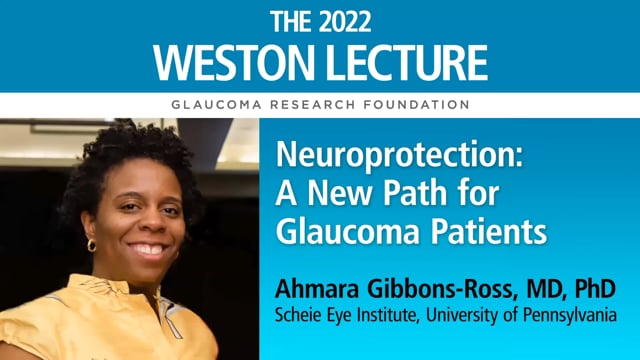Research Videos & Webinars

2025 GRF Annual Dinner Keynote: Jeffrey L. Goldberg, MD, PhD
“The Future is Now: Neuroprotection & Vision Restoration for Glaucoma”

Envisioning the Future of Glaucoma Care — David Friedman, MD, MPH, PhD
The 2024 Weston Lecture was presented October 29, 2024 as a virtual event featuring Dr. David Friedman of Harvard Medical School and Mass. Eye and Ear

2024 GRF Annual Dinner Keynote: John Flanagan, PhD, DSc, FCOptom
“Collaboration and Discovery: The Road to a Cure”

The Role of Genetics in Glaucoma Diagnosis and Treatment: Now and in the Future — Janey L. Wiggs, MD, PhD
Glaucoma genetics expert Janey L. Wiggs, MD, PhD (Harvard Medical School) delivered the 2023 Weston Family Lecture.

2023 GRF Annual Dinner Keynote: Ruth Williams, MD
“45 Years of Innovation: Dedication to a Cure.”

Neuroprotection: A New Path for Glaucoma Patients
The 2022 Weston Lecture featuring Ahmara Gibbons Ross, MD, PhD

New Avenues for Vision Restoration Research — Adriana Di Polo, PhD
The 2021 Weston Lecture featuring Adriana Di Polo, PhD, Dept. of Neuroscience, Université de Montréal.

Seeing the Future: Longevity Research and Glaucoma
The 2020 Weston Family Glaucoma Research Lecture featuring David A. Sinclair, PhD, AO.

2019 Annual Dinner Keynote: David Calkins, PhD
“The Catalyst for a Cure Initiative to Restore Sight.”

Glaucoma Genetics: Working Toward a Cure — Janey Wiggs, MD, PhD
Janey L. Wiggs, MD, PhD delivered the 2019 New Horizons Forum keynote lecture.

Biomarkers and Drug Discovery: Jeffrey L. Goldberg, MD, PhD
Jeffrey L. Goldberg, MD, PhD presents research advances from the Catalyst for a Cure biomarkers team.
